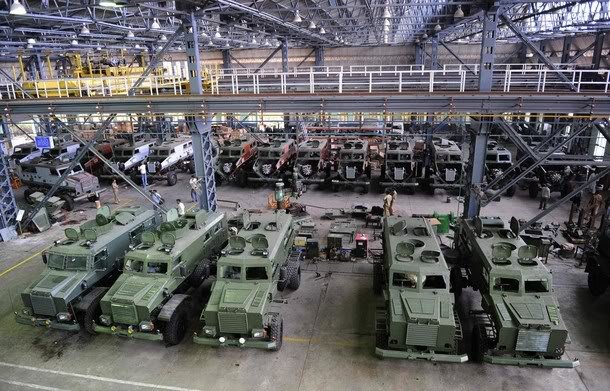
शस्त्राणि रक्षति राष्ट्रं, वि ज्ञानंदेशंप्रबोधयति ।
स्वावलम्बनंसर्वत्र, संप्रदायस्य तत्त्वंच।
Translation:
Weapons protect the nation, science enlightens the country.
Self-reliance everywhere, is the essence of progress.
India’s defence sector has crossed a significant milestone in the fiscal year 2023-24, reaching a record ₹1.27 lakh crore in indigenous defence production. This marks a 16.7% growth from the previous year, underscoring the nation’s commitment to self-reliance in defence. The strategic push towards indigenous defence production is a critical component of India’s broader vision for national security and economic development. Indigenous defence production involves the development and manufacturing of defence equipment and technology within a country’s borders, utilising its resources, skills, and industries.
This approach aims to achieve self-reliance and reduce dependency on foreign imports for defence needs. According to the Stockholm International Peace Research Institute (SIPRI), India was the world’s largest importer of major arms between 2019 and 2023, accounting for 9.8% of global arms sales. This heavy reliance on imports has historically exposed India to geopolitical risks and financial burdens, highlighting the need for a robust indigenous defence production capability.
Achieving self-reliance in defence is crucial for India’s strategic autonomy. Indigenous production ensures that critical defence needs are met without reliance on potentially unreliable foreign sources.
Dependence on foreign suppliers can be a significant vulnerability, especially during conflicts. Indigenous capabilities enhance national security by ensuring the availability and reliability of defence equipment. Economic Benefits include the reduction of imports which help alleviate the Balance of Payments deficit, promote employment, and potentially lead to exports, thereby contributing to economic growth. Less expensive indigenous production saves foreign exchange, lowers the cost of procurements and maintenance, leading to reduced fiscal deficits.
The fiscal year 2023-24 saw significant achievements in India’s defence production, Over 79% of defence production was contributed by Defence Public Sector Undertakings (DPSUs) and Public Sector Undertakings (PSUs), with nearly 21% coming from the private sector. Since 2019-20, the value of defence production has increased by over 60%. By 2028-29, annual defence production is expected to reach ₹3 lakh crores (more than 42 billion in USD equivalent), with defence exports projected to hit ₹50,000 crores (some 7 billion in USD). These figures highlight the growing role of the private sector and the substantial increase in production capacity, reflecting a maturing defence industrial base.
India’s journey towards defence indigenisation has been marked by significant milestones and challenges. There has been a shift from Soviet-Based to Indigenous Defence Industrialization. In the mid-1980s, India shifted from a licence-based production model to a research and development (R&D)-focused defence industrialisation strategy. This shift was epitomised by the Integrated Guided Missile Development Programme (IGMDP) launched in 1983, aimed at developing five missile systems: Prithvi, Akash, Trishul, Nag, and Agni. The 1990 Self Reliance Review Committee aimed to boost the self-reliance index from 30% to 70% by 2005. However, these goals were not fully met due to various challenges, including insufficient indigenous efforts and the need for co-development and production with foreign partners. Notable collaborations included the 1998 India-Russia BrahMos missile agreement and partnerships with Israel and France. The potential for defence indigenisation is vast, driven by several factors:
- Rising Demand: National security concerns and ongoing territorial disputes with Pakistan and China drive the growth of the defence manufacturing industry.
- Growth Opportunities: India’s proactive foreign trade policies and joint defence manufacturing agreements with countries like the UAE, Kazakhstan, and the US offer significant growth potential.
- Experienced Industry: India has a well-established defence industrial base, with companies like Hindustan Aeronautics Limited (HAL), the Ordnance Factory Board, and Bharat Electronics Limited (BEL) among the top 100 defence companies globally.
- Future Contracts: The defence ministry estimates potential contracts worth approximately ₹4 lakh crores (US$ 57.2 billion) for the domestic industry in the next 5-7 years (2025-2027).
Despite significant progress, India faces several challenges in achieving full self-reliance in defence such as the lack of a sufficient defence manufacturing base. Building a robust manufacturing base requires substantial investment and time. The absence of a permanent arbitration committee for dispute resolution hinders private sector participation. Disagreements on equipment design and capacity between the armed forces and manufacturers often lead to delays. High costs and lack of an assured market also result in delays and credibility issues. Foreign companies are naturally reluctant to transfer critical technologies. Licensing issues and bureaucratic red tape hinder the ease of doing business.
To overcome these challenges and fully realise the potential of defence indigenisation, India must adopt a multifaceted approach. It must ensure a level playing field for private industry, DRDO, DPSUs, and OFB. The country should tap its strong software industry and emerging technologies like AI and cyber security, provide financial and administrative autonomy to the Defence Research and Development Organisation (DRDO), enhance and improve in-house design capabilities, drawing lessons from the Navy’s success and build a robust supply chain with Indian SMEs playing a key role in the global Original Equipment Manufacturer (OEM) supply chain. India should work to attract Foreign Companies by encouraging them to set up operations in the country by offering them favourable policies and partnerships.
By addressing the challenges and leveraging its strengths, India can achieve self-reliance in defence, bolstering national security and contributing to economic growth. The journey towards defence indigenisation is crucial for India’s aspiration to wield global power, capable of defending its interests and contributing to international peace and stability. The Naval Innovation and Indigenisation Organisation (NIIO) and Defence Innovation Organisation (DIO) have launched an initiative to integrate at least 75 new indigenous technologies and products into the Indian Navy. This initiative aims to foster innovation and enhance self-reliance in naval capabilities.The government has simplified industrial licensing processes, extended validity periods, and liberalised the Foreign Direct Investment (FDI) policy, allowing up to 74% automatic route investment. These measures aim to attract more investment and ease the entry of private players into the defence sector.
By fostering a self-reliant defence sector, India not only secures its strategic autonomy but also paves the way for technological advancements and widening economic prosperity. The ongoing efforts and initiatives will shape the future of India’s defence capabilities, making the nation a formidable actor on the global stage.






Add comment